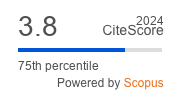Article | Open Access
Social and Physical Characterization of Urban Contexts: Techniques and Methods for Quantification, Classification and Purposive Sampling
| Views: | 6541 | | | Downloads: | 4054 |
Abstract: Robust quantitative descriptions of the social and physical characteristics of urban contexts are essential for assessing the impacts of urban environments on other, potentially dependent variables. Common methodologies used for that purpose, however, are either coarse or suffer from biasing effects. At the social level, the use of indicators encoded into pre-defined areal units, makes results prone to the Modifiable Areal Unit Problem. At the physical level, the adopted morphological indicators are usually highly aggregated descriptors of urban form. Moreover, there is a lack of explicit methodologies for the purposive sampling of urban contexts with specific combinations of social and physical characteristics, which—we argue—may be more effective than probabilistic sampling, when exploring phenomena as elusive as the effects of urban contextual factors. This article presents a set of GIS-based methods for addressing these issues, based on: a) local indicators of spatial association; b) detailed quantitative morphological descriptions, coupled with unsupervised classification techniques; and c) purposive sampling strategies carried out on the data generated by the proposed context characterization methods (a and b). The methods are illustrated through the characterization of the urban contexts of the 77 state-sector secondary schools in Liverpool, but are generalizable across all categories of urban objects and are independent of the geographical context of implementation.
Keywords: characterization; morphological; purposive sampling; socio-economic; urban context
Published:
© Miguel Serra, Sophia Psarra, Jamie O’Brien. This is an open access article distributed under the terms of the Creative Commons Attribution 4.0 license (http://creativecommons.org/licenses/by/4.0), which permits any use, distribution, and reproduction of the work without further permission provided the original author(s) and source are credited.


